

East West University (EWU) is growing steadily upholding the sprits of its oath “Excellence in Education” in order to contribute to the development of the business and technological sectors of Bangladesh. Our programs are updated continuously by an independent academic council consisting of scholars from renowned academic institutions of the country and are based on curricula North American Universities. Our graduates are much sought after and employed by the corporate sectors of the country.


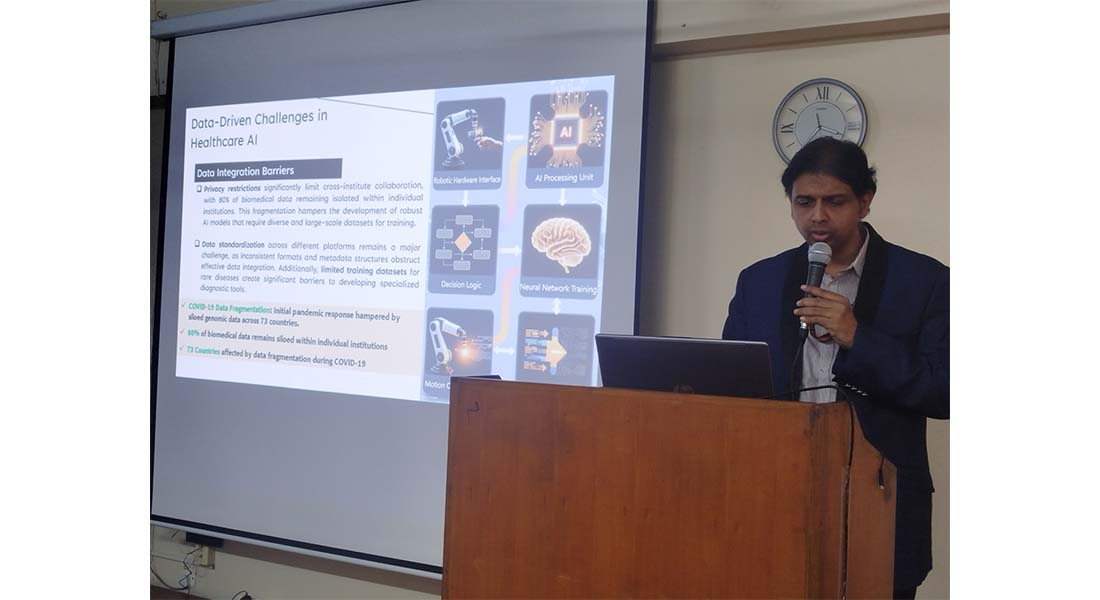
Prof. Dr. Ahmed Wasif Reza, Dean of the Faculty of Sciences and Engineering at East West University (EWU), was invited a...

Professor Dr. Ahmed Wasif Reza, Dean of the Faculty of Sciences and Engineering (FSE) and Professor of Computer Science ...
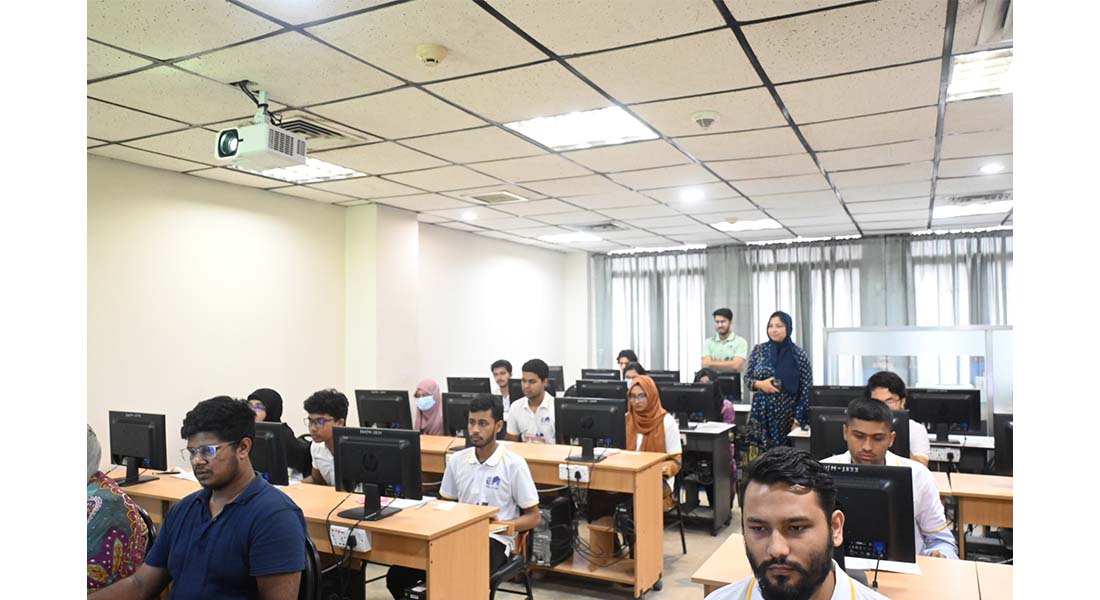
The Department of CSE organized the Intra-University Programming Contest – Summer 2025 on 08–09 August 2025 to promote p...
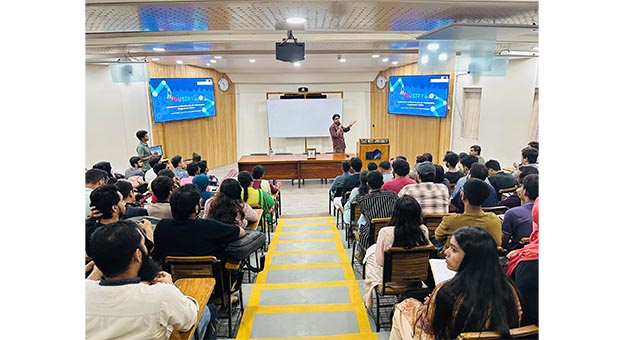
A highly engaging seminar titled “Industry 5.0 and Sustainable AI: Transforming Bangladesh’s Future” was held at East We...
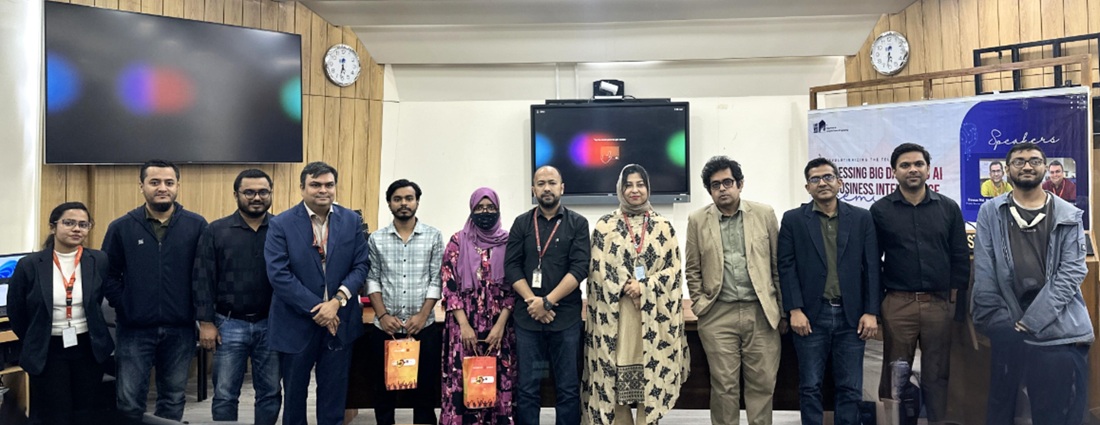
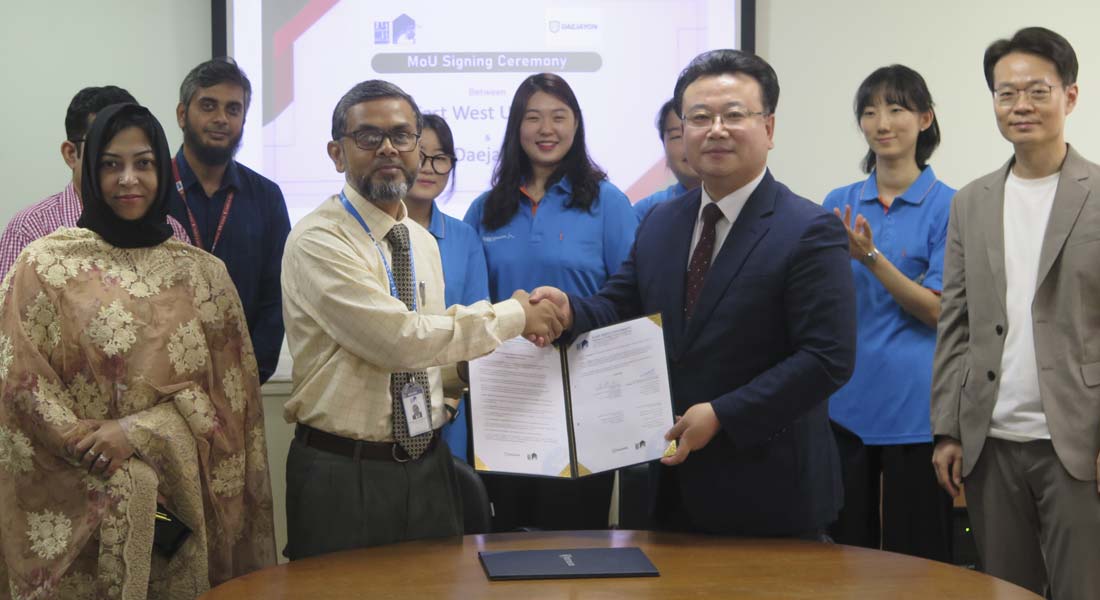
A Memorandum of Understanding (MoU) has been signed between the Department of Computer Science and Engineering (CSE) of ...
CSE103
Credit Hours and Teaching Scheme:
|
|
Theory
|
Laboratory
|
Total
|
|---|---|---|---|
|
Credit Hours
|
3
|
1.5
|
4.5
|
|
Contact Hours
|
3 Hours/Week for 13 Weeks +
Final Exam in the 14th week |
3 Hours/Week for 13 Weeks
|
6 Hours/Week for 13 Weeks +
Final Exam in the 14th week |
Prerequisite:None
Course Objective:The purpose of this course is to introduce the students to computer programming using structured language. The students will be able to enhance their analyzing and problem-solving skills and use the same for writing programs using C language. Knowledge of this course will be needed as prerequisite knowledge for future courses such as CSE106 Discrete Mathematics, CSE110 Object Oriented Programming, CSE207 Data Structures, CSE246 Algorithms, CSE302 Database Systems, CSE366 Artificial Intelligence, CSE405 Computer Networks and many others.
Course Outcomes (COs):
After completion of this course students will be able to:
|
CO1
|
Explain the fundamentals of programming and basic structure of C programming language.
|
|
CO2
|
Compare and applythe appropriate decision making and control statements, arraysand functions to solve computational problems.
|
|
CO3
|
Applyappropriate data structures like pointers, structures, unions, user defined data types, and dynamic memory to solve computational problems.
|
|
CO4
|
Compare and apply language constructs and data structures; perform and demonstrate skills and write report to design, build, and test moderately complex computational problems.
|
Course Contents
|
Course Topic
|
CO
|
|---|---|
|
Introduction to computers and programming languages, data representation in computer, flowchart construction for problem solving
|
CO1
|
|
Introduction to C Programming (input, output, variables, data types, operators, expressions, assignments)
|
CO1
|
|
Conditional control statements (if, if-else, nested if-else, switch)
|
CO2
|
|
Loop statement (while, for and do…while) and nested loop statement, break and continue statements
|
CO2
|
|
Introduction to arrays (arrays, declaring arrays, manipulating arrays)
|
CO2
|
|
Multidimensional array
|
CO2
|
|
Characters and strings (various types of string manipulation)
|
CO2
|
|
Introduction to functions (function definitions, function prototypes and argument, header files). Solving complex problems in modular fashion using user defined function
|
CO2
|
|
Introduction to recursive definition and solving problem using recursive function
|
CO2
|
|
Pointers (pointer variable declarations, pointer operators, passing arguments to functions by reference with pointers, pointer expressions and pointer arithmetic, arrays of pointers, and function pointers)
|
CO3
|
|
Structures (structure definitions and initialization, accessing structure members, structure with function and pointer)
|
CO3
|
|
File management (files and streams, creating a file, reading data from file, writing data to file, and updating files)
|
CO3
|
|
Dynamic memory allocation and linked lists
|
CO3
|
|
Lab exercises
|
CO4
|
|
Mini project
|
CO4
|
CSE106
Credit Hours and Teaching Scheme:
|
|
Theory
|
Laboratory
|
Total
|
|---|---|---|---|
|
Credit Hours
|
3
|
0
|
3
|
|
Contact Hours
|
3 Hours/Week for 13 Weeks +
Final Exam in the 14th week |
0
|
3 Hours/Week for 13 Weeks +
Final Exam in the 14th week |
Prerequisite: CSE103 Structured Programming
Course Objective: This course builds up the students’ ability to think and express logically and mathematically. The course will address mathematical reasoning, combinatorial analysis, algorithmic thinking, and discrete structures. Knowledge of this course will be needed as prerequisite knowledge for future courses such as CSE 110 Objected Oriented Programming, CSE207 Data Structures, CSE246 Algorithms, CSE302 Database Systems, CSE366 Artificial Intelligence, CSE405 Computer Networks, and CSE471 Compiler Design.
Course Outcomes (COs):
After completion of this course students will be able to:
|
CO1
|
Interpret and apply propositional logic, predicate logic, and theorem proving for mathematical reasoning.
|
|
CO2
|
Interpret and apply counting, permutations, and combinations for combinatorial analysis.
|
|
CO3
|
Interpret and apply the growth of functions, complexity analysis of algorithms, and integer algorithms for algorithmic thinking; demonstratethis knowledge and write report for realistic problem solving.
|
|
CO4
|
Interpret and apply discrete structures such as sets, functions, relations, graphs, and trees for modeling discrete objects; demonstratethis knowledge and write report for realistic problem solving.
|
Course Contents
|
Course Topic
|
CO
|
|---|---|
|
Propositional Logic, Propositional Equivalences
|
CO1
|
|
Predicates and Quantifiers, Nested Quantifiers
|
CO1
|
|
Rules of Inference, Introduction to Proofs
|
CO1
|
|
Mathematical Induction
|
CO1
|
|
Sets, Set Operations
|
CO4
|
|
Functions
|
CO4
|
|
Relations and Their Properties
|
CO4
|
|
The Basics of Counting, The Pigeonhole Principle, Permutations and Combinations
|
CO2
|
|
Algorithms, The Growth of Functions, Complexity of Algorithms
|
CO3
|
|
The Integers and Division, Primes and Greatest Common Divisor
|
CO3
|
|
Graphs, Graph Terminologies and Special Types of Graphs, Representing Graphs and Graphs Isomorphism
|
CO4
|
|
Introduction to Trees
|
CO4
|
|
Assignments with reports and presentations
|
CO3, CO4
|
CSE110
Credit Hours and Teaching Scheme:
|
|
Theory
|
Laboratory
|
Total
|
|---|---|---|---|
|
Credit Hours
|
3
|
1.5
|
4.5
|
|
Contact Hours
|
3 Hours/Week for 13 Weeks +
Final Exam in the 14th week |
3 Hours/Week for 13 Weeks
|
6 Hours/Week for 13 Weeks +
Final Exam in the 14th week |
Prerequisite:CSE106 Discrete Mathematics
Course Objective: This course presents a conceptual and practical introduction to object oriented programming (OOP). The course will cover general principles of programming in object oriented frameworks to enhance transferable skills, such as programming, designing, and problem-solving skills. This course introduces object oriented concepts and develops OOP programs which provides solutions to real world object oriented problems. Knowledge of this course will be needed as prerequisite knowledge for future courses, such as CSE207 Data Structures, CSE246 Algorithms, CSE370 Mobile Programming, and CSE425 Numerical Methods.
Course Outcomes (COs):
After completion of this course students will be able to:
|
CO1
|
Identify issues related to the definition, creation and usage of classes and objects.
|
|
CO2
|
Use the principles of inheritance and polymorphism and analyseproblemsfor design of abstract classes and interfaces.
|
|
CO3
|
Apply programming skills and examine key issues to the design of object oriented software.
|
|
CO4
|
Choose software tool, perform and demonstrate skills, and write report to design, build, and test realistic object orientedprograms.
|
Course Contents
|
Course Topic
|
CO
|
|---|---|
|
Implementclasses, objects, member functions and data members, and also incorporate separating interface
|
CO1
|
|
Design object oriented program using flow control and control structures
|
CO2
|
|
Design object oriented program using functions and recursions
|
CO2
|
|
Design object oriented program using arrays, character, pointers, and dynamic memory allocation
|
CO2
|
|
Design object oriented program to implement arrays of objects, friend functions, constructors and destructors with dynamic memory allocation.
|
CO3
|
|
Design object oriented program to implement multiple, multilevel, hierarchical, and hybrid inheritance, and virtual base classes
|
CO3
|
|
Design polymorphic object-oriented program to implement pointers to base class, virtual members abstract base classes, and pure virtual members
|
CO3
|
|
Design object oriented program to implement operator overloading, templates, and exception handling
|
CO3
|
|
Lab exercises
|
CO4
|
|
Mini project
|
CO4
|